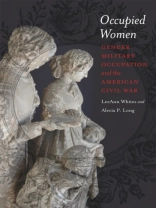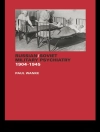In the spring of 1861, tens of thousands of young men formed military companies and offered to fight for their country. Near the end of the Civil War, nearly half of the adult male population of the North and a staggering 90 percent of eligible white males in the South had joined the military. With their husbands, sons, and fathers away, legions of women took on additional duties formerly handled by males, and many also faced the ordeal of having their homes occupied by enemy troops. With occupation, the home front and the battlefield merged to create an unanticipated second front where civilians-mainly women-resisted what they perceived as unjust domination. In Occupied Women, twelve distinguished historians consider how women’s reactions to occupation affected both the strategies of military leaders and ultimately even the outcome of the Civil War.Alecia P. Long, Lisa Tendrich Frank, E. Susan Barber, and Charles F. Ritter explore occupation as an incubator of military policies that reflected occupied women’s activism. Margaret Creighton, Kristen L. Streater, Lee Ann Whites, and Cita Cook examine specific locations where citizens both enforced and evaded these military policies. Leslie A. Schwalm, Victoria E. Bynum, and Joan E. Cashin look at the occupation as part of complex and overlapping differences in race, class, and culture. An epilogue by Judith Giesberg emphasizes these themes. Some essays reinterpret legendary encounters between military men and occupied women, such as those prompted by General Butler’s infamous "Woman Order" and Sherman’s March to the Sea. Others explore new areas such as the development of military policy with regard to sexual justice. Throughout, the contributors examine the common experiences of occupied women and address the unique situations faced by women, whether Union, Confederate, or freed. Civil War historians have traditionally depicted Confederate women as rendered inert by occupying armies, but these essays demonstrate that women came together to form a strong, localized resistance to military invasion. Guerrilla activity, for example, occurred with the support and active participation of women on the home front. Women ran the domestic supply line of food, shelter, and information that proved critical to guerrilla tactics. By broadening the discussion of the Civil War to include what Lee Ann Whites calls the "relational field of battle, " this pioneering collection helps reconfigure the location of conflict and the chronology of the American Civil War.
Alecia P. Long & LeeAnn Whites
Occupied Women [PDF ebook]
Gender, Military Occupation, and the American Civil War
Occupied Women [PDF ebook]
Gender, Military Occupation, and the American Civil War
قم بشراء هذا الكتاب الإلكتروني واحصل على كتاب آخر مجانًا!
لغة الإنجليزية ● شكل PDF ● صفحات 264 ● ISBN 9780807143940 ● محرر Alecia P. Long & LeeAnn Whites ● الناشر LSU Press ● نشرت 2009 ● للتحميل 3 مرات ● دقة EUR ● هوية شخصية 5673138 ● حماية النسخ Adobe DRM
يتطلب قارئ الكتاب الاليكتروني قادرة DRM












